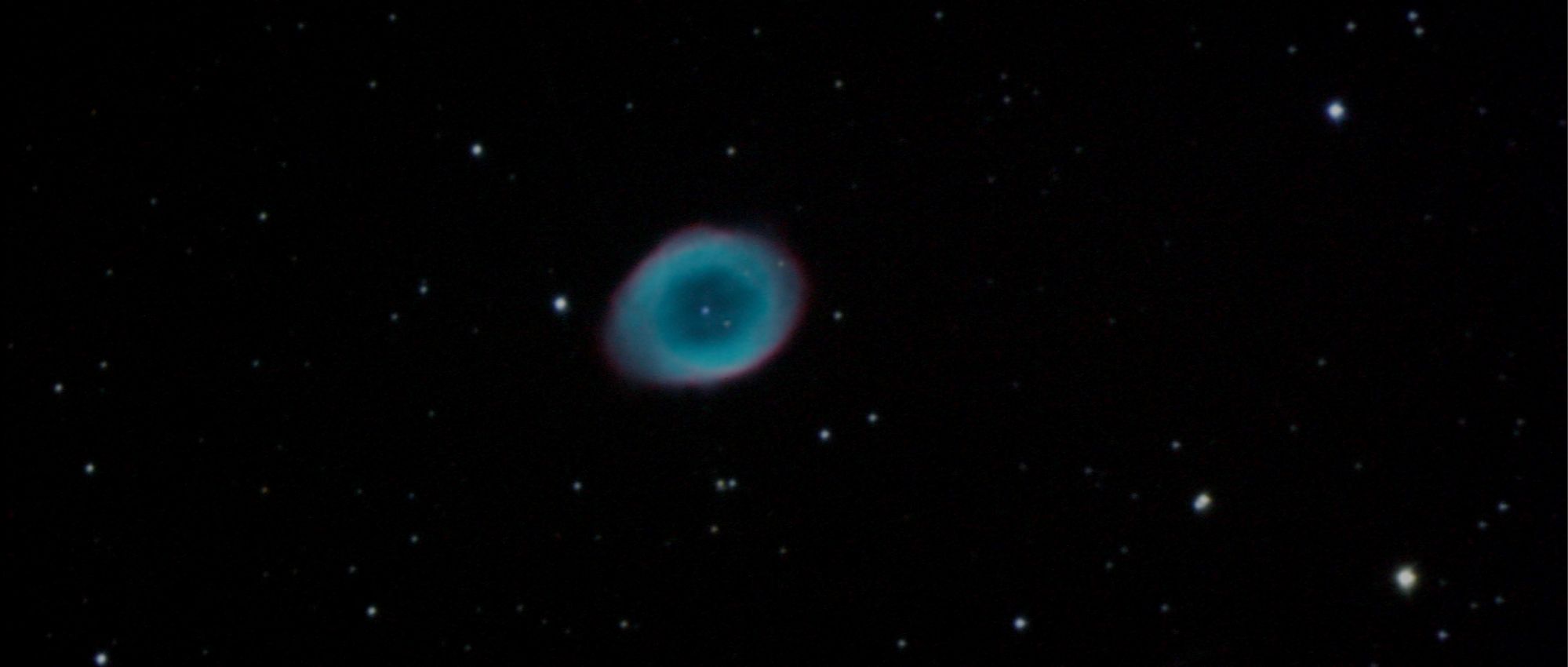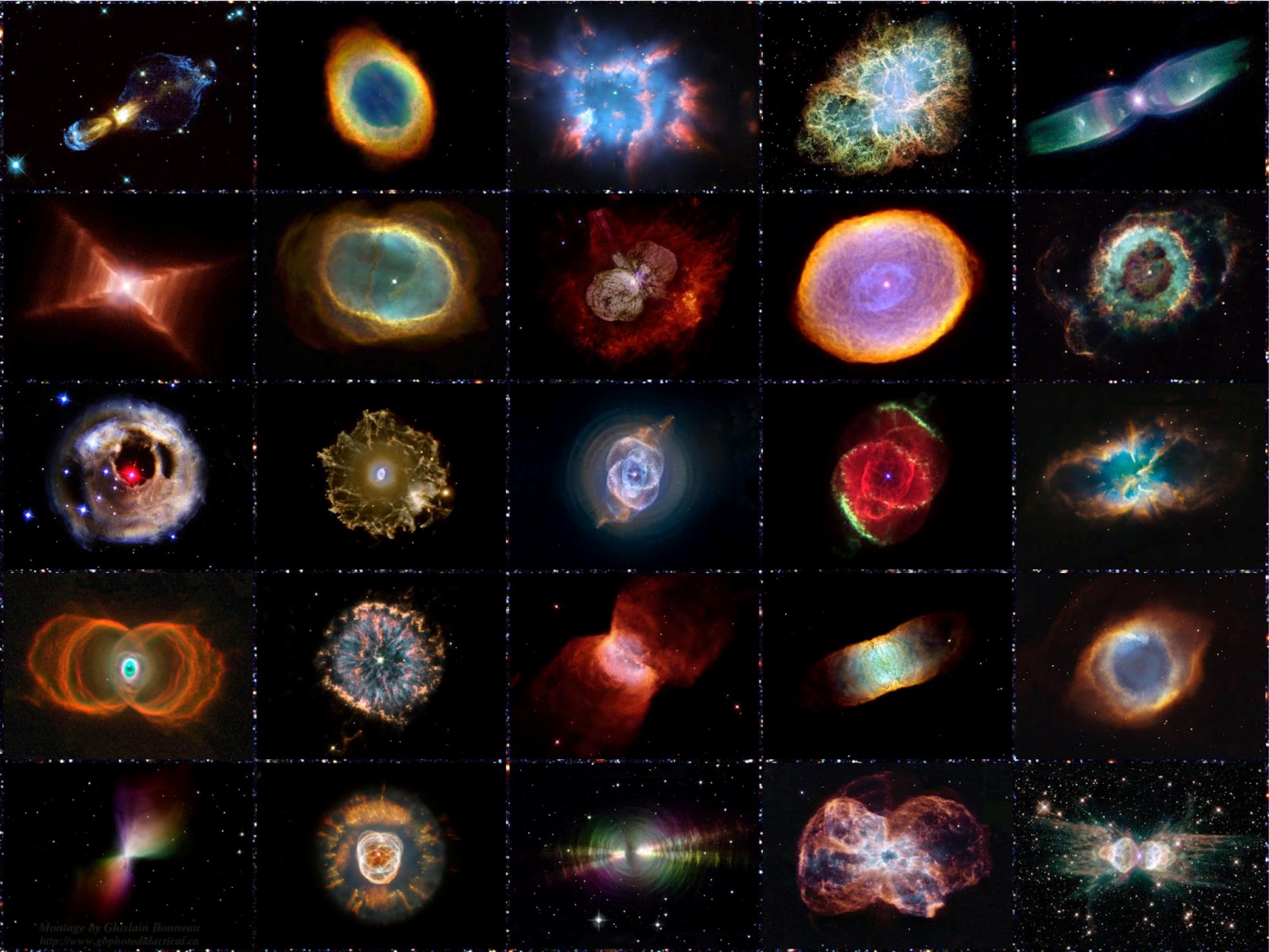What Stars Leave Behind

The Ring Nebula (M57) taken with Chabot’s 36″ telescope, Nellie.
What’s Happening in the Night Sky – Summer Stargazing Highlights
What Stars Leave Behind
In conversation with Gerald and John, Chabot Resident Astronomers
Summer nights bring more than just warm evenings and longer days—they open a portal into the deeper universe. At Chabot Space & Science Center, we’re spending our summer evenings peering into the cosmos, and we invite you to do the same. Whether you’re looking through a telescope or simply lying back and watching the stars, this season offers incredible opportunities to witness the life cycles of stars, explore deep-sky objects, and reconnect with our place in the universe.
The Ring Nebula: A Star’s Last Breath
One of the highlights of the summer sky is the Ring Nebula, a beautiful remnant of a dying star located in the constellation Lyra. You’ll find Lyra high in the eastern sky around 9:00PM. Its brightest star, Vega, shines a vivid bluish-white and serves as a guidepost to the Nebula. Though the Ring Nebula isn’t visible with the naked eye, you can catch a glimpse of it through one of our telescopes, or even see it through your own telescope you can purchase in our gift shop!
The Ring Nebula sits 2,500 light-years away, and what you’re seeing is the slow end of a star’s life. Contrary to the dramatic explosions we associate with supernovae, most stars die slowly. After billions of years in the main sequence phase, they expand into red giants, shedding their outer layers of gas over hundreds of thousands of years. What’s left is a white dwarf: a small, incredibly dense and hot core that emits ultraviolet radiation. This radiation makes the expelled gas glow, creating the colorful display we see in the night sky.
The Ring Nebula looks like a smoke ring floating in space, but appearances can be deceiving. While it seems spherical, astronomers now believe we’re looking down the tube of an hourglass-shaped structure. The colors in the nebula come from glowing gases: hydrogen (red), oxygen (a bright turquoise green), and other elements like carbon and neon.
These types of objects are called planetary nebulae, a name that dates back to the 18th and 19th centuries when astronomers first observed them and mistakenly thought they were new planets forming. Now we know that these glowing clouds mark the death of medium-sized stars, a process so common that images of multiple planetary nebulae can be found in collections from telescopes like Hubble.

Composite image of Hubble Space Telescope images, showing mostly planetary nebulae, but also a couple supernovae remnants.
Life and Death Among the Stars
Stars up to eight times the mass of our sun die quietly. After becoming white dwarfs, they slowly cool over trillions of years, eventually becoming black dwarfs. All white dwarfs that have formed since the beginning of the universe are still glowing as white dwarfs; an indication of just how long it takes a star to die.
The Summer Solstice
Friday the 20th at 7:42PM, the Sun reached its northernmost point in the sky during its apparent path across the background stars. This marked the Summer Solstice: the longest day of the year for those of us in the northern hemisphere and the official start of summer.
We say “apparent path” because what we perceive as the annual motion of the Sun is actually the result of the Earth’s annual orbit around the Sun. This celestial dance is a great reminder of how our planet’s tilt and motion shape the cycles of nature. And what better way to welcome the season than by heading outside to look up?
Stargazing Tips for Summer
Use a telescope to explore planetary nebulae, globular clusters, and galaxies. We have telescopes available in the Chabot gift shop if you’re ready to take your skywatching to the next level. Don’t have a telescope? Find a dark sky location and bring a camera. Summer evenings are great for capturing wide-field images of the Milky Way, especially because we’re looking toward its galactic center at this time of year. Look for Lyra and Vega in the east as evening falls.
Join us at Chabot on free telescope viewing nights Friday and Saturday evenings from 7:30-10:30PM (weather permitting) to get expert help and see these deep-sky wonders for yourself.
Unveiling the Universe with the Oakland Space Academy
At Chabot, we’re passionate about helping our community understand the night sky. Whether you’re just getting started or already deep into astrophotography, summer is a spectacular time to connect with the cosmos. And if you’re interested in learning more about astronomy and astrophotography this summer, be sure to check out the Oakland Space Academy’s newest Intensive courses, Astronomy 101 and Unveiling the Universe: Astrophotography 101. Students will explore cosmology, galaxies, star formation, dark matter, and more, and will learn how to identify things in the night sky and get started in astrophotography as a hobby. These classes are perfect for high school age kids to adults – all you need is your cell phone. (Laptops are provided.) Tickets for both courses are on sale now!
Come visit us soon, or just head outside, look up, and let the universe unfold.




